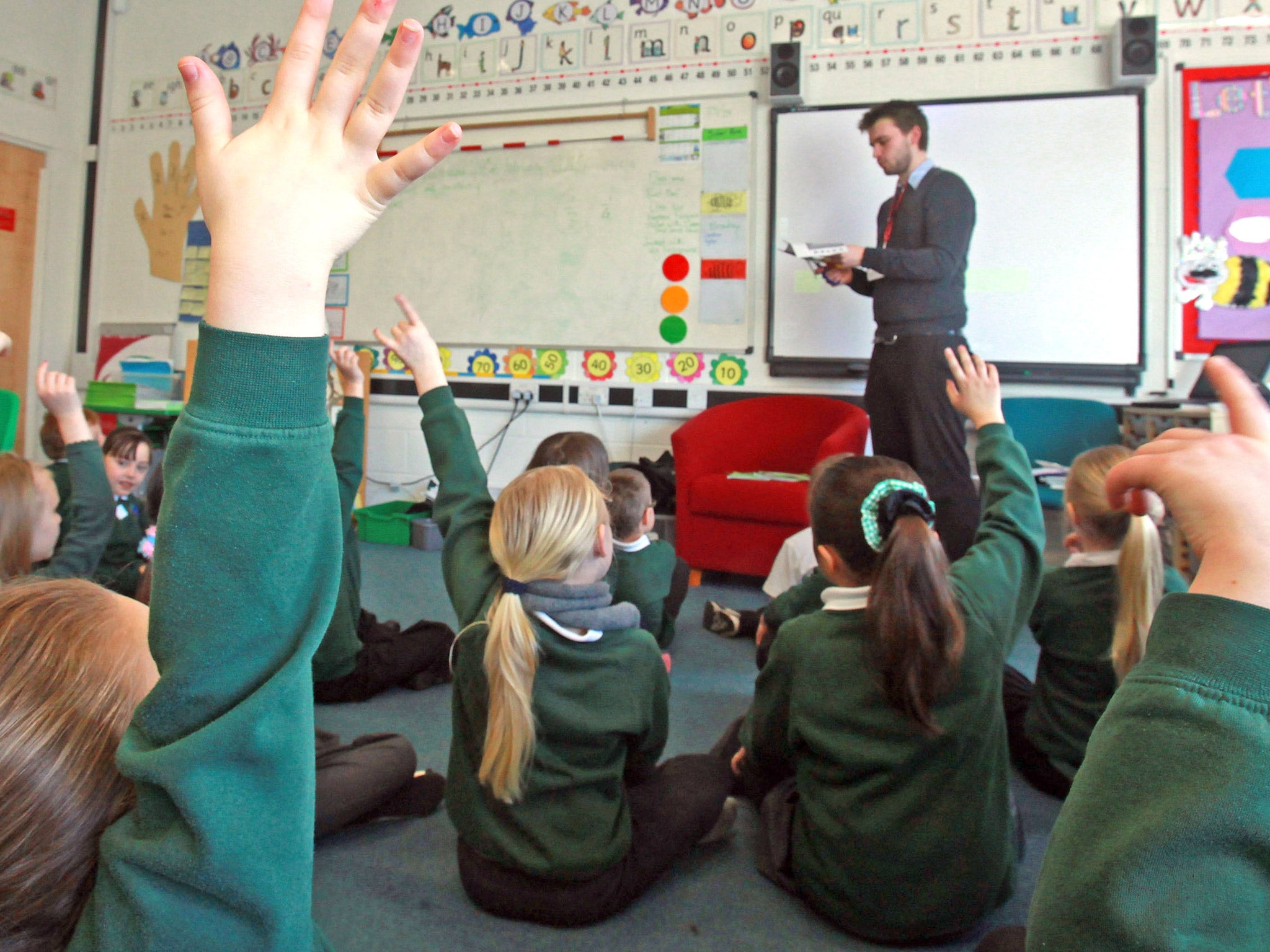'Supersize' classes for infants triple in five years, while school choice has become narrower
Figures revealed by Labour are an embarrassment to the Tory Party, whose 2010 manifesto promised smaller classes

More than 100,000 infants are now being taught in “supersize” classes of over 30 pupils amid a growing crisis over school places, according to new figures.
The statistics, obtained by the Labour Party through Freedom of Information Act requests, are released as hundreds of thousands of four- and five-year-olds find out which school they will attend in September. Teaching unions have warned that 20,000 infants would miss out on a place at any of their favoured schools.
According to Labour, the number of five- to seven-year-olds being taught in classes of above 30 has more than tripled since 2010. It has risen from 31,265 (about 2.2 per cent of the total) five years ago to 93,345 last year (5.9 per cent) and 102,615 this year – the highest for 15 years. The figures were based on returns from 61 local authorities, covering 4,673 of the 16,784 state-funded primary schools. The findings are potentially embarrassing for David Cameron because the Conservatives’ 2010 manifesto promised “smaller schools with smaller class sizes”.
In pictures: Experts' predictions for the General Election - 11/04/15
Show all 10Labour is fighting next month’s election on a pledge to cap class sizes for five- to seven-year-olds at 30 or under. It would divert resources from the Tories’ flagship free schools, claiming they are deepening the problem of over-sized classes. Labour says that 96 per cent of areas that urgently need new primary places this autumn do not have a primary free school.
Tristram Hunt, the shadow Education Secretary, said: “The crisis in school places is yet more evidence that the Tory plan is failing working families. It is thanks to David Cameron and his decision to spend hundreds of millions of taxpayers’ money on a few free schools in areas where there are no shortages of places that the number of young children in supersize classes has more than tripled since 2010 and parents are finding it harder to get a place for their child at a local school.”
He added: “Like parents, Labour understands that young children do best in small classes. We will cap class sizes for five-, six- and seven-year-olds at 30 and prioritise spending for new places in areas which need them – paid for by ending the free schools programme. We will put a qualified teacher in every classroom, improve classroom discipline and raise standards for all children.”
A Conservative Party spokesman insisted: “Labour cut over 200,000 primary school places – and even ignored official warnings to provide extra school places after a baby boom. The Conservatives have created over 400,000 school places.
“There are fewer children in overcrowded primary schools and most importantly, one million more children in good or outstanding schools since 2010. Chaotic Labour can’t even get its facts right. Only the Conservatives have a plan that will give every child the best start in life.”
Tory officials said infant classes were already capped at 30 pupils and the average size is 27.4. Children can join classes of over 30 in exceptional circumstances, and they often fall back to 30 after a year or two. They said 72 per cent of free schools are located in areas with a shortage of places, while 90 per cent of those announced in the most recent wave will be in areas where places are needed.
Dr Mary Bousted, general secretary of the Association of Teachers and Lecturers, said: “The 20,000 children who will be denied a place at any of their preferred schools have been failed by the Coalition Government.
“These children were born on the Coalition’s watch and have been let down by a government that prioritised the ideological free school programme over ensuring that every child has a school place.”
Christine Blower, general secretary of the National Union of Teachers, said: “The Coalition’s obsession with free schools and its attempts to run 25,000 schools from Whitehall has done little to counter the growing school places crisis.”
Case study: A primary class of 32
Mike Higgins, from south-east London has a six-year-old daughter in a Year One class of more than 30 pupils
My daughter’s class had 32 pupils at the start of the year, though the school said some were expected to leave. Classes are too big in the state sector, but I got a sense on a visit that the teaching staff were engaging properly with the children – that was more important to me.
My daughter would get more attention in a smaller class. However, I feel that because she comes from relatively stable background and is quite well-adjusted I’m happy with her progress. The perception of a class sitting there with a teacher and an assistant all day long isn’t quite right. As far as I’m aware, my daughter is often out of the classroom in small groups having focused time.
She’s only six though – at this stage, she’s largely there to learn how to socialise and get on with people from other backgrounds. Someone with a child about to go to secondary school would probably have a different attitude.
Subscribe to Independent Premium to bookmark this article
Want to bookmark your favourite articles and stories to read or reference later? Start your Independent Premium subscription today.

Join our commenting forum
Join thought-provoking conversations, follow other Independent readers and see their replies